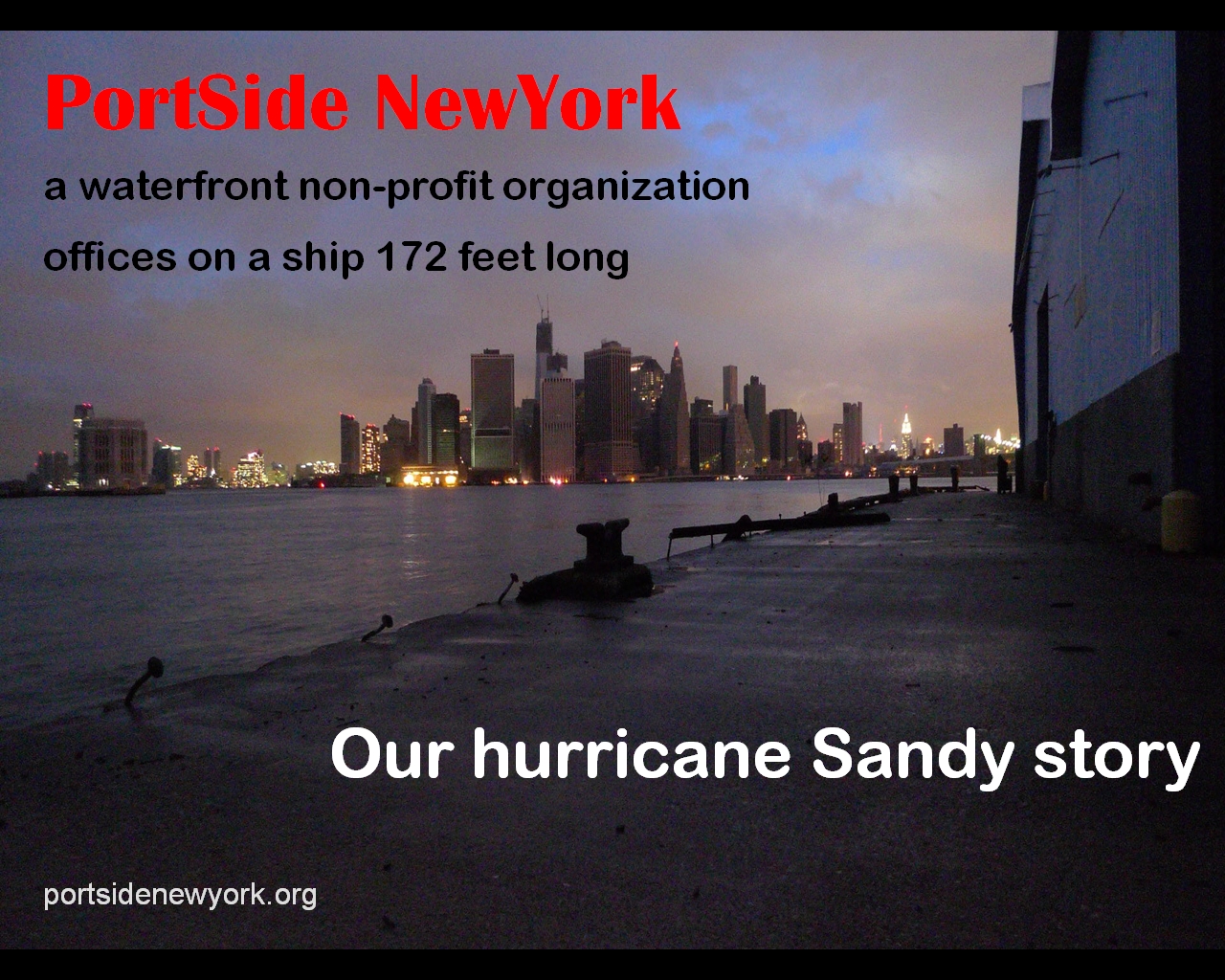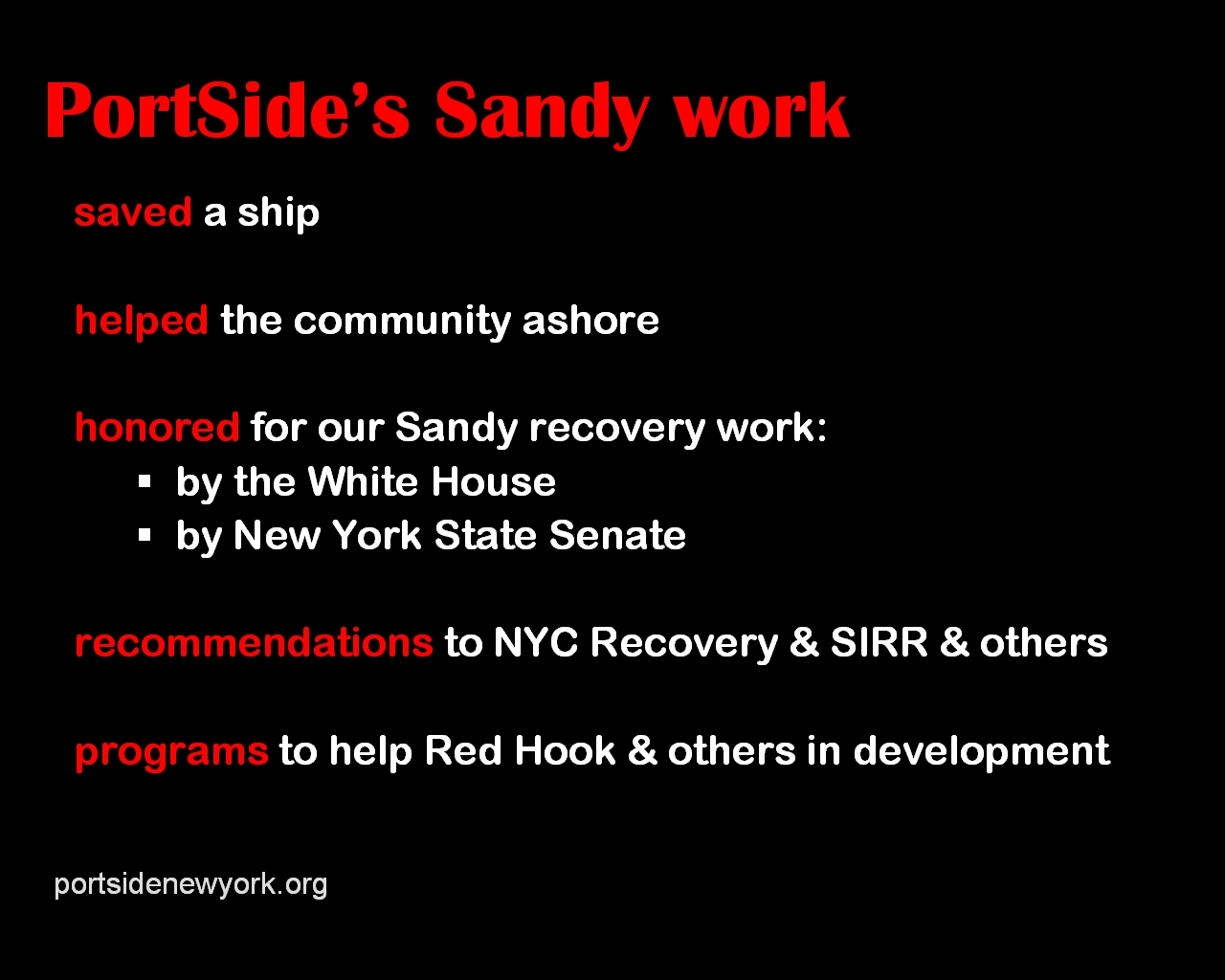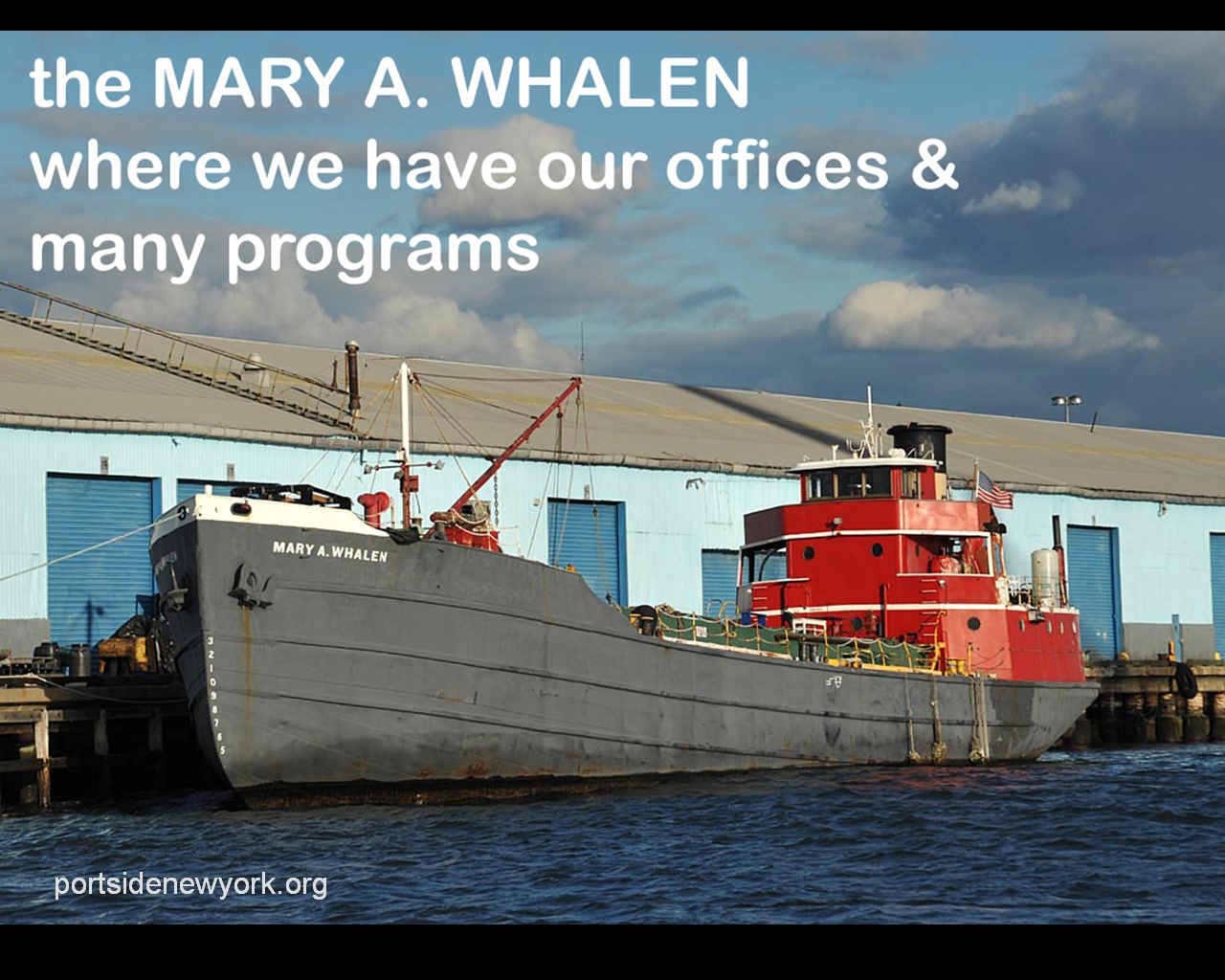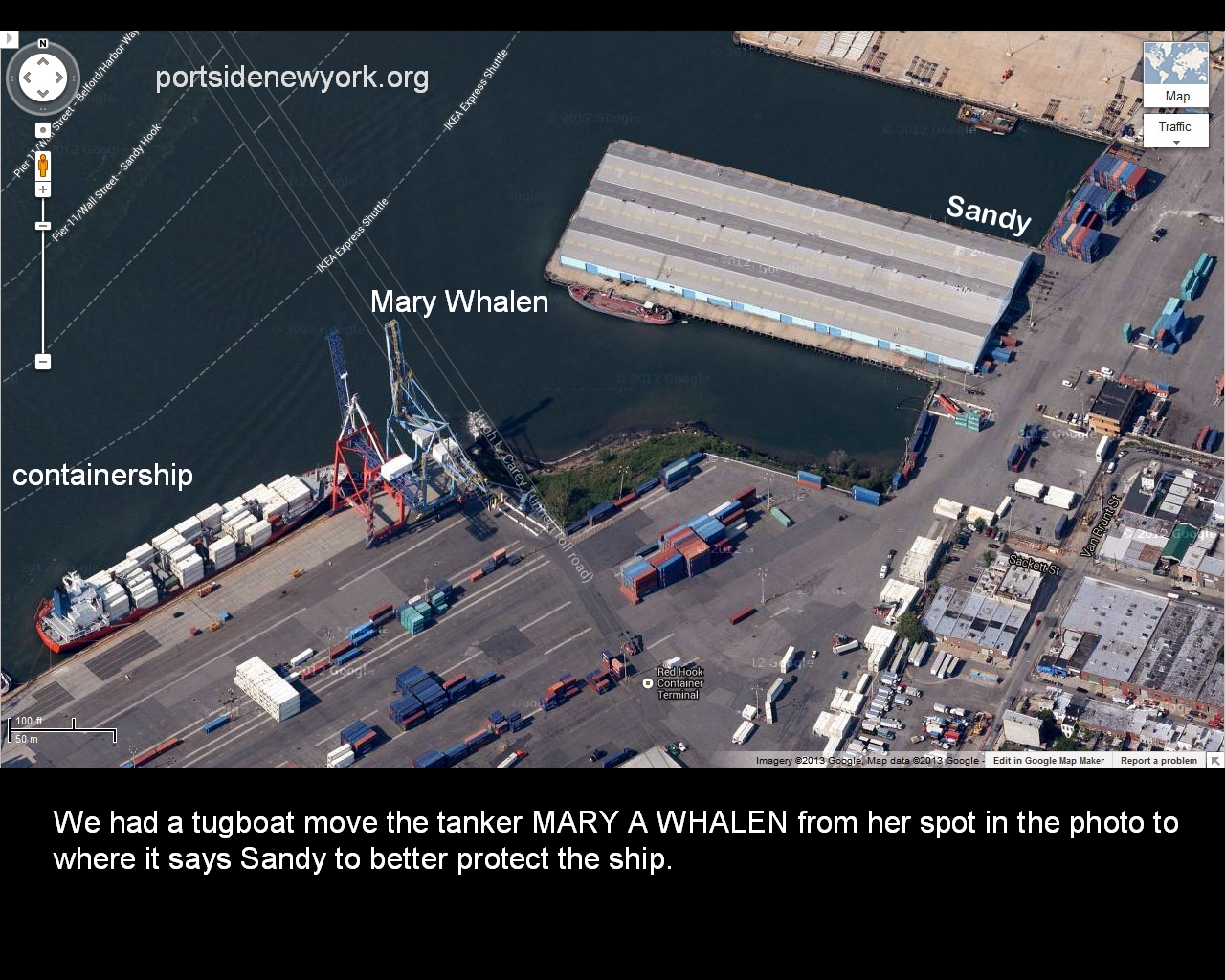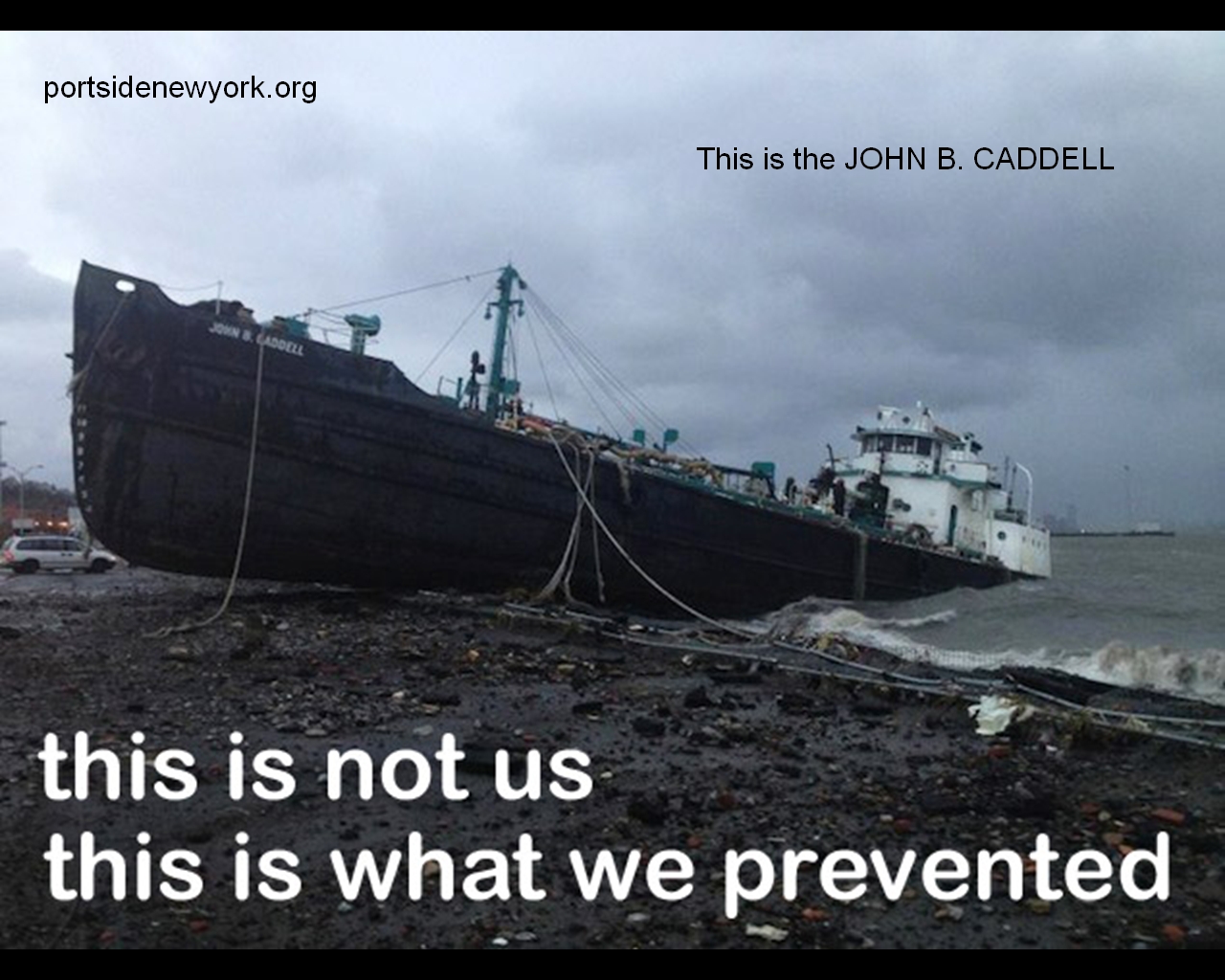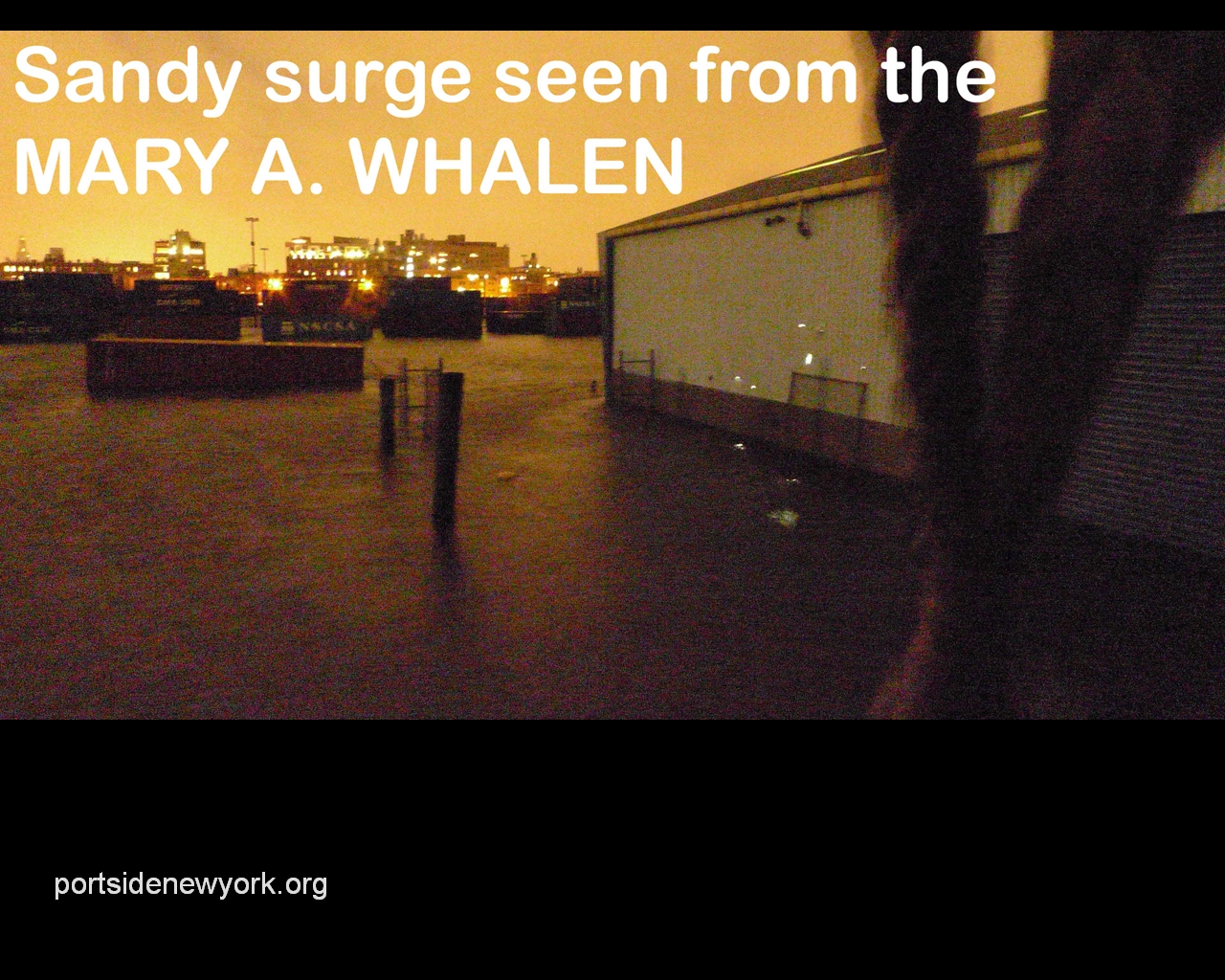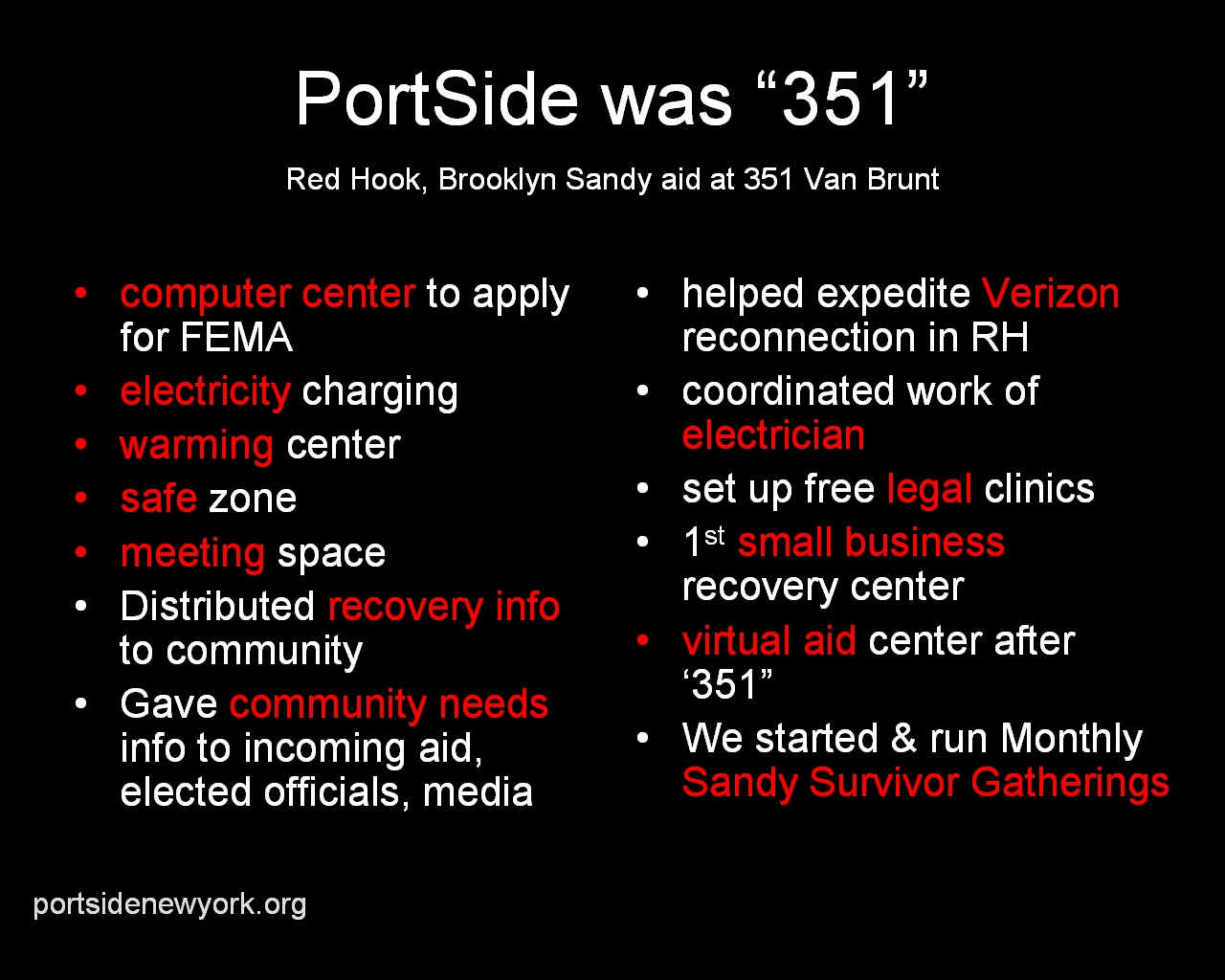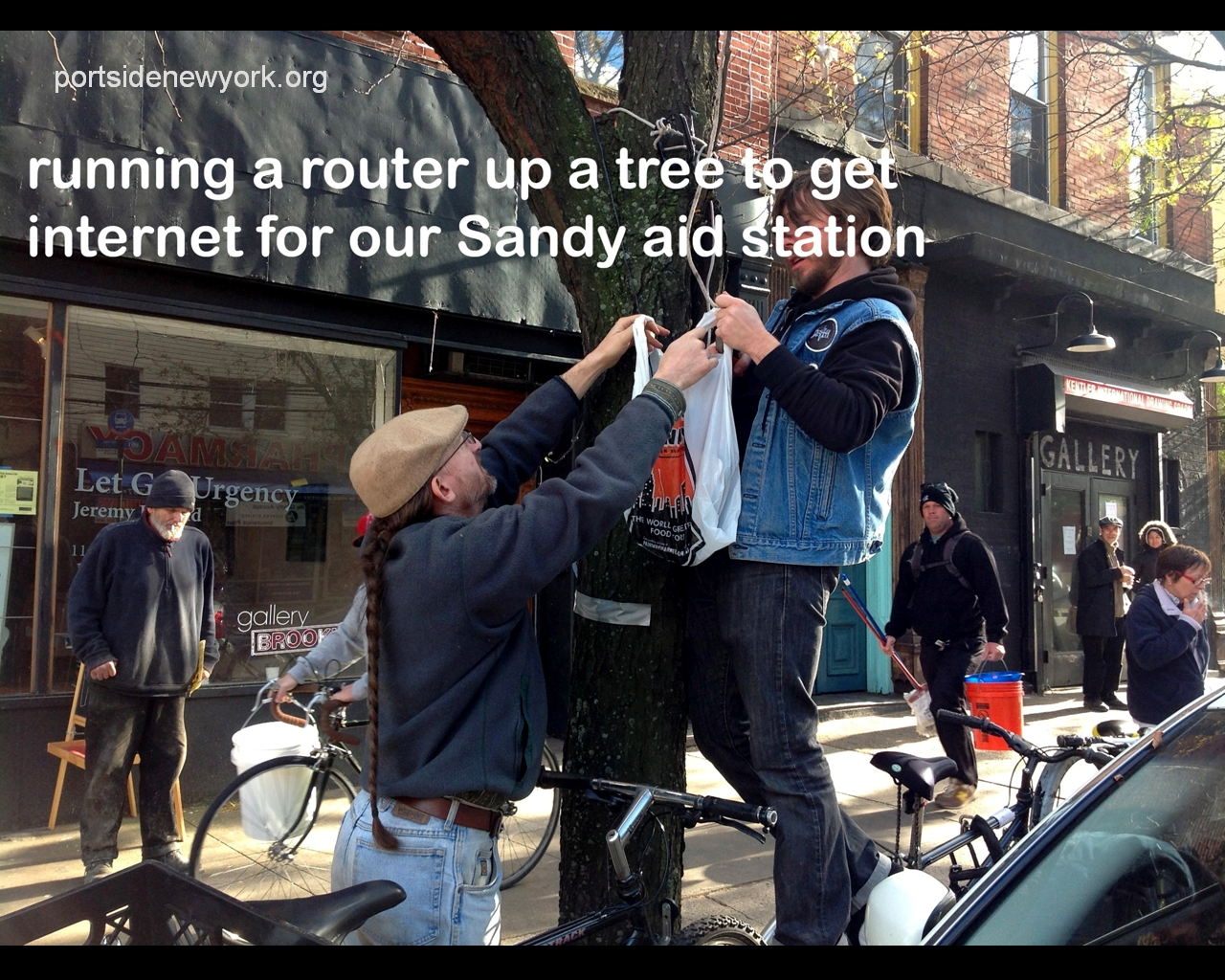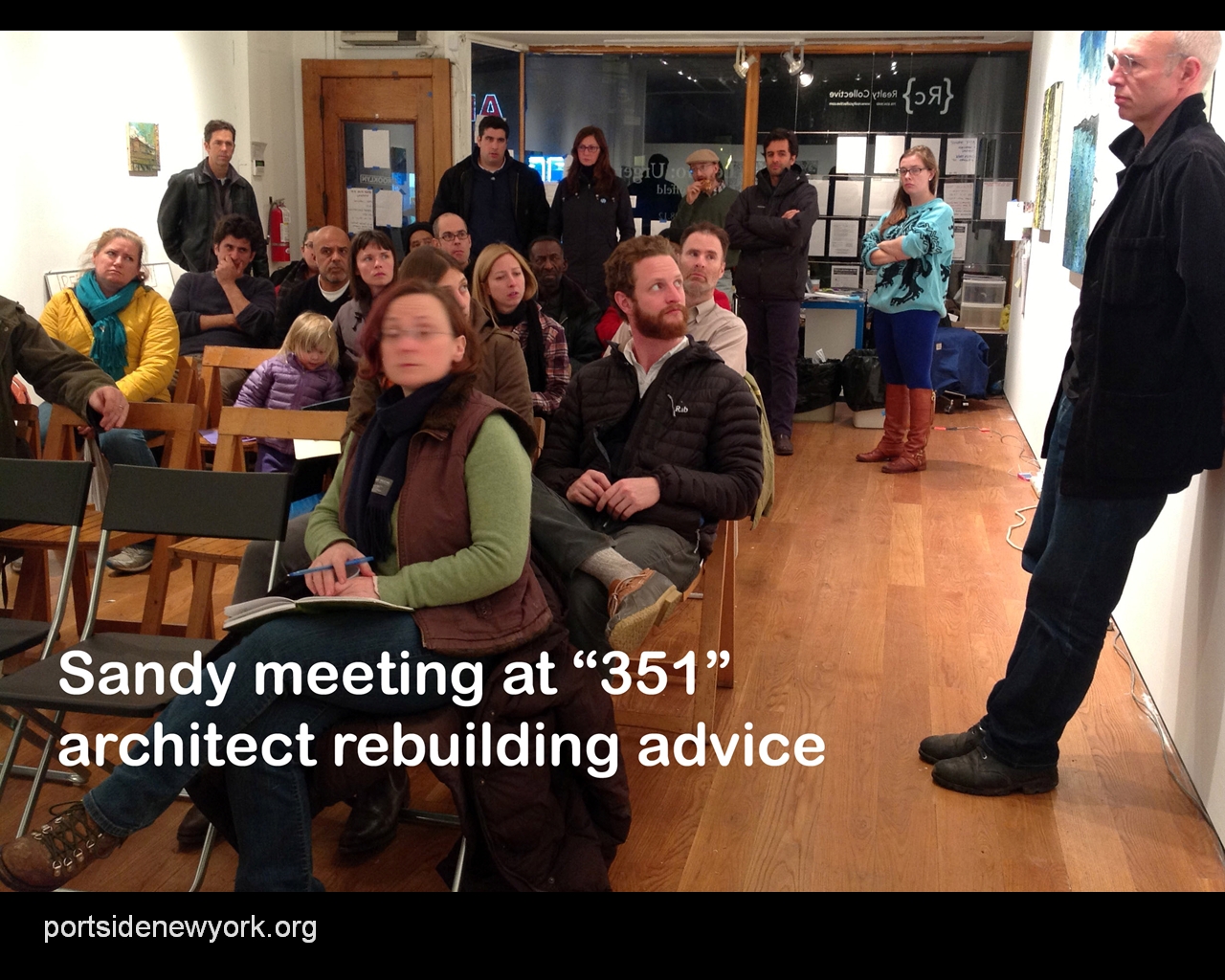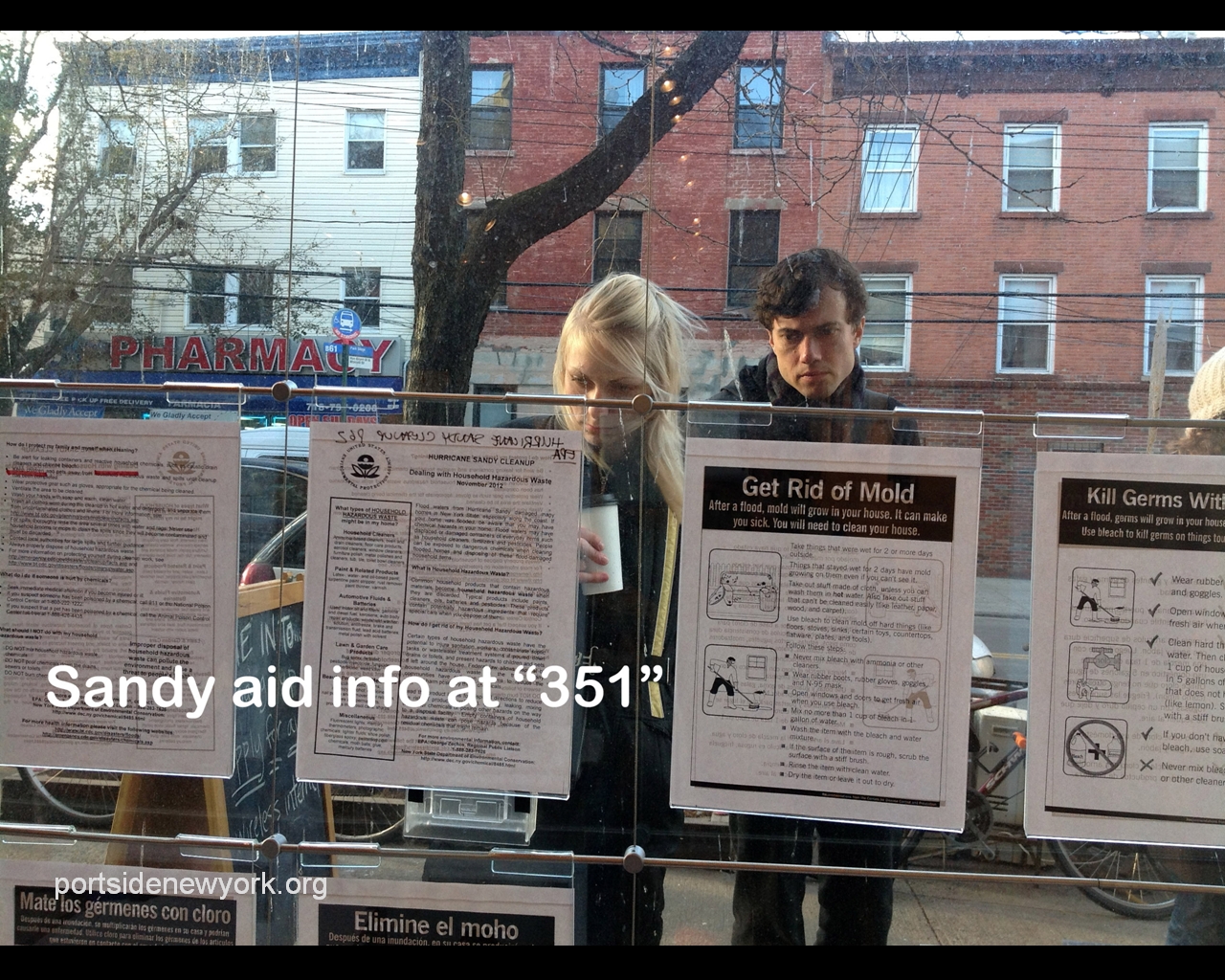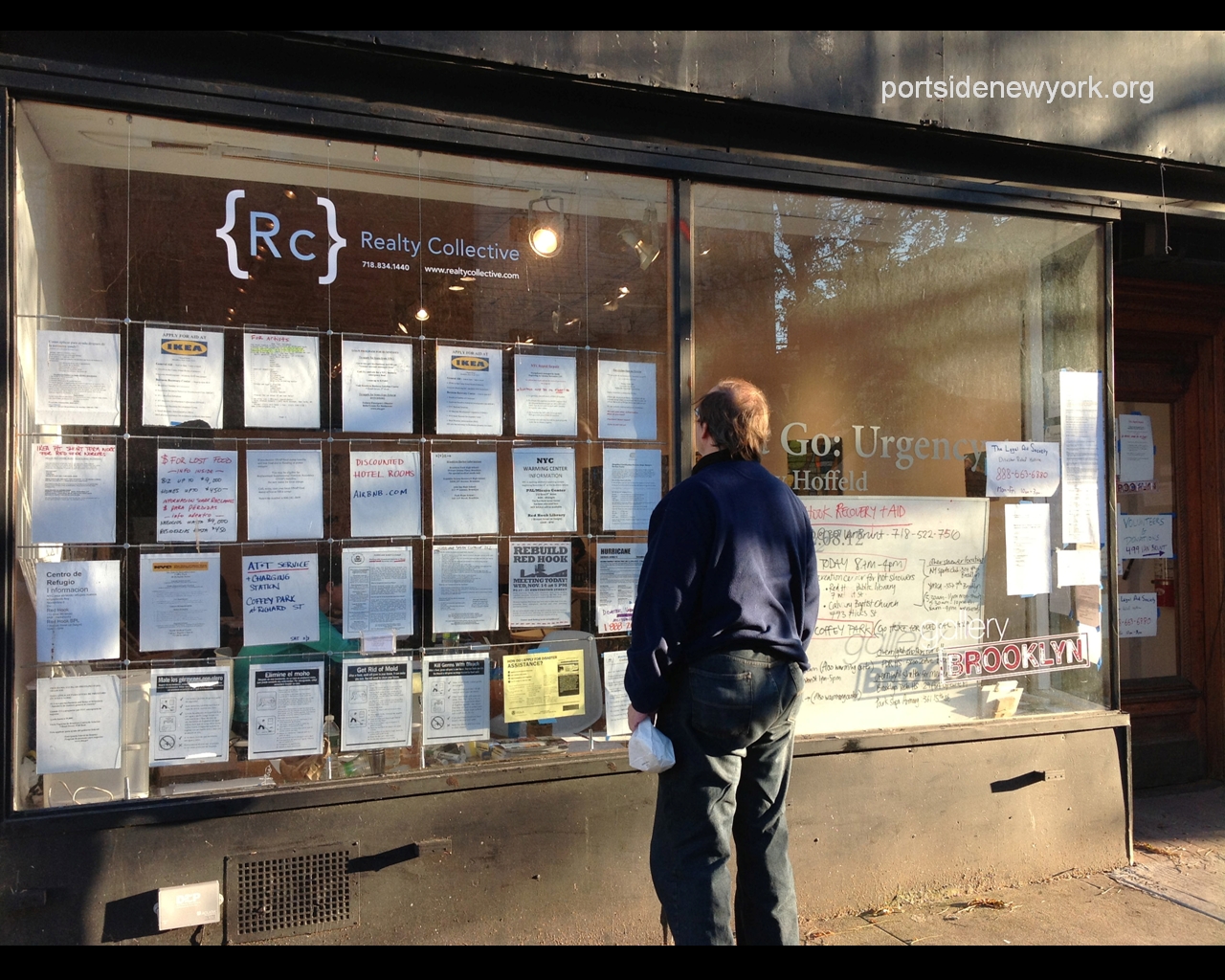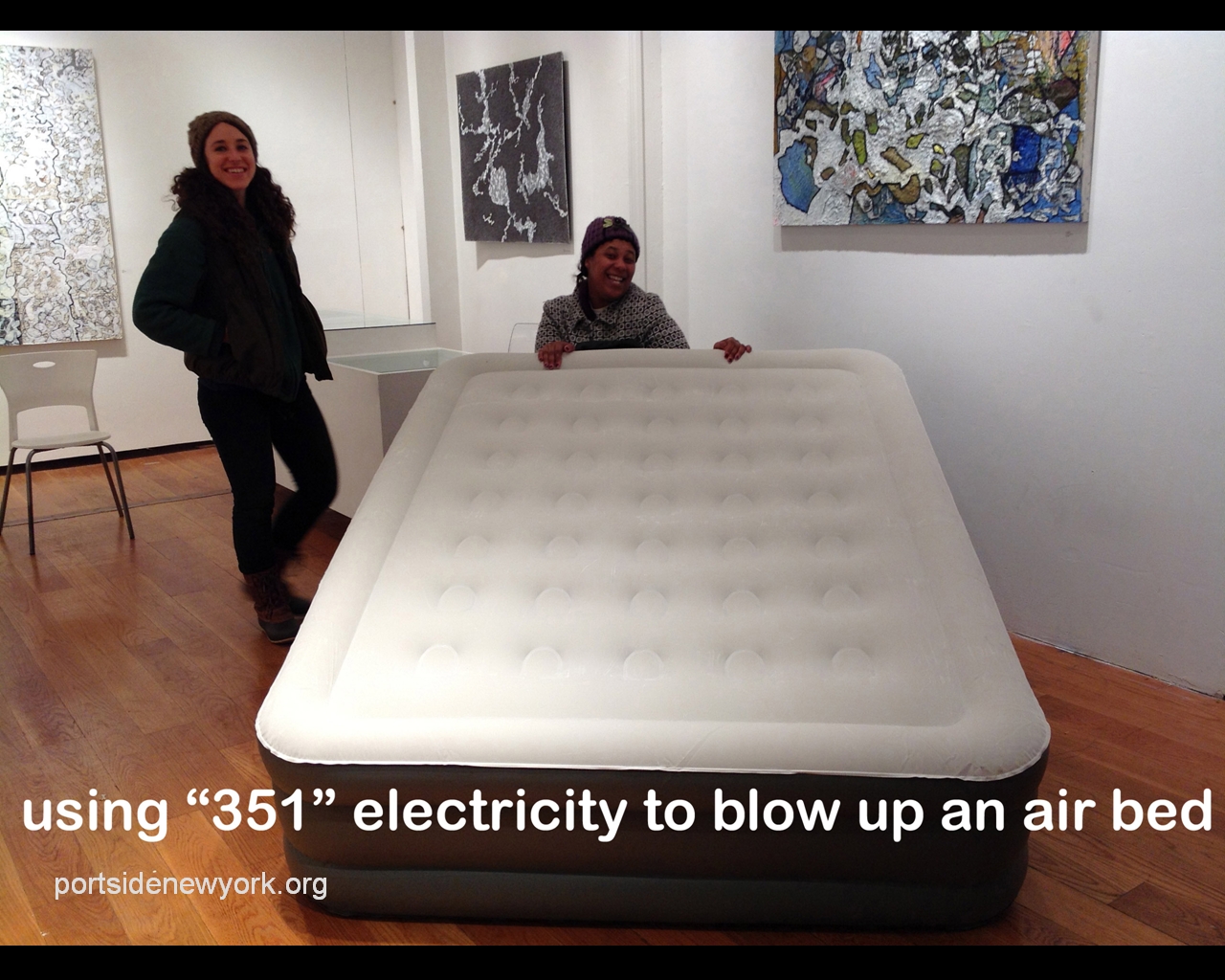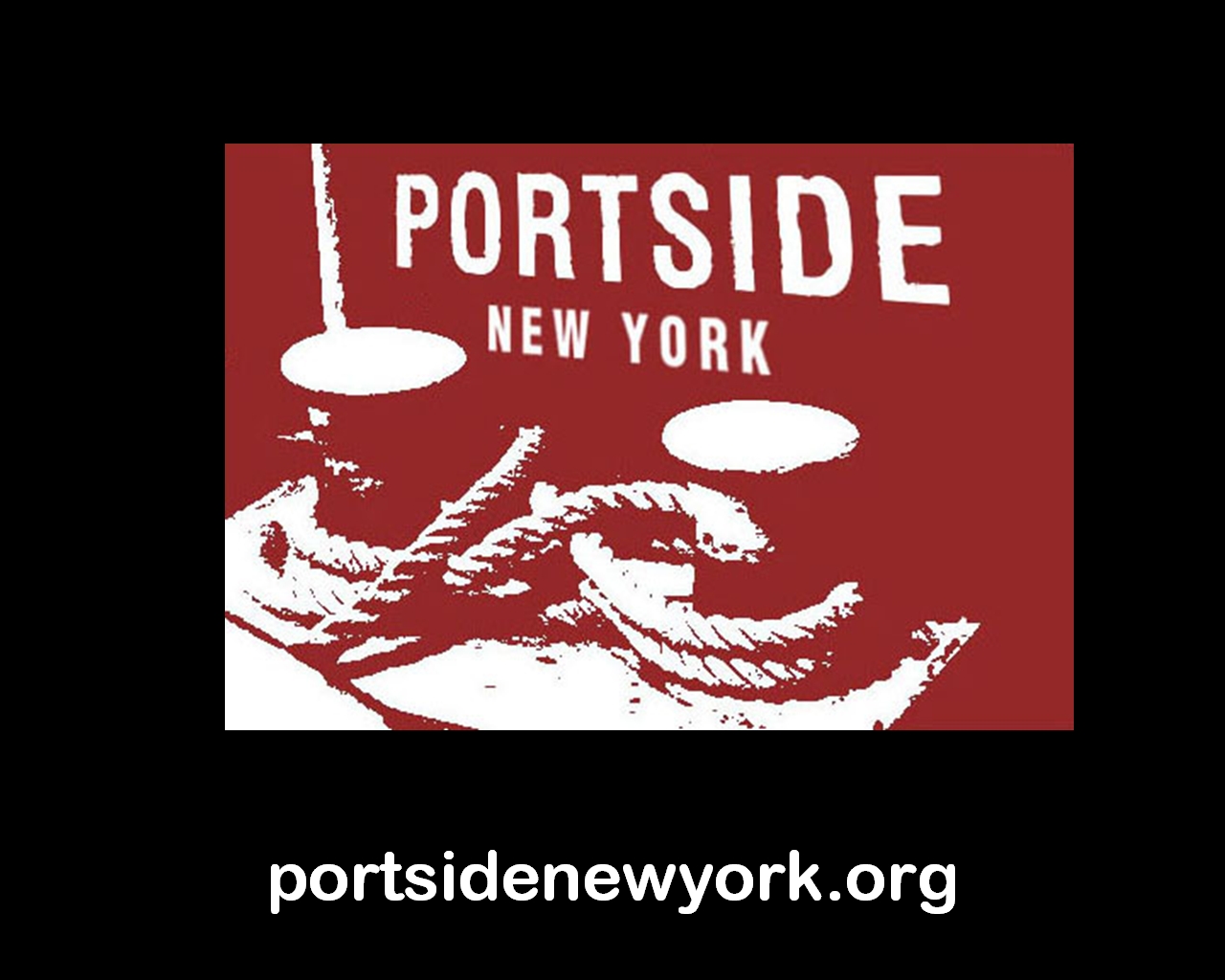We are proud that our Sandy recovery work (four and a half days of prevention work followed by recovery aid to the community) earned us a White House "Champions of Change" award in April 2013 and a New York State Senate resolution honoring us in June, 2013. We hope these awards will bring attention to Red Hook and enable us to further support Red Hook's recovery and resiliency.
PortSide's Sandy role ashore and afloat
Ashore: We were Red Hook's "351"
PortSide's first accomplishment was protecting the MARY A. WHALEN, an asset on the National Register of Historic Places, from Sandy damage -- and from her damaging the property of others if she broke loose.
PortSide suffered damage to other assets, but it was not mission-stopping; so we put that on hold and prioritized helping others. We came ashore to help Red Hook, Brooklyn, and negotiated a donated storefront. The morning of Friday 11/2/12, we set up what became a vital aid center, one of only four to six hubs that existed in Red Hook depending on which day you counted. We were "351," our center's nickname due to the address 351 Van Brunt, in a combined office-gallery space donated by Realty Collective.
With most of our staff unable to get to Red Hook (one of them a Sandy victim in Sheepshead Bay), our Director Carolina Salguero recruited volunteers off the street to drive to our shipboard offices and get six computers, printers, scanner, etc.
Soon thereafter, our curator Peter Rothenberg biked down from Park Slope, and the team set up an "apply for aid" computer center. The internet was down, so Peter rigged a router up a tree for several days. This prompted Carolina to expedite the reconnection of Red Hook's Verizon cell and internet service by calling an associate who had been senior in the cellphone industry.
See "351" and our neighbors in a very moving video by Brooklyn Independent Television here and read the full "351" story here.
Our hub was the place where people and businesses could apply for recovery funds, as well as recharge electrical devices, warm up, rest, and set-up a community meeting.
We were Red Hook's first small business recovery center, before the IKEA or Coffey Park aid centers. We organized free legal clinics. We coordinated the work of angel electrician Danny Schneider who inspected 60 Red Hook homes for free and fixed many for just the cost of parts. We responded to needs as they walked in the door and invented as we went along. Carolina's experience with disasters due to her fourteen years of work as a photojournalist helped her immediately understand Sandy issues and was an asset to our figuring out how to respond.
After a month, we closed "351" and continued supporting Red Hook through a virtual aid station and by coordinating with aid providers and the government entities.
We saw a need, by the six-month anniversary of the storm, to bring Red Hook back together and for several months ran monthly Sandy Survivor Gatherings to foster the cooperative spirit that sustained much of Red Hook in the immediate aftermath of the storm.
Spring and Summer 2013, we also began to deal with our own Sandy damage while developing programs to help Red Hook prepare for possible floods. Our program ideas are based on our experience of Sandy, what we gleaned from attending recovery and resiliency conferences and city-run planning sessions in 2013, and our pre-Sandy waterfront knowledge base.
PortSide was all about the water part of the waterfront, what we call the BlueSpace, well before Sandy; and we are working to deploy our BlueSpace knowledge and connections to help the community ashore understand to prepare for future flood events as we knew to do (more on that under "Afloat" below).
Know Your Marine Weather Via a blogpost and emails. PortSide explained marine weather to help Red Hook prepare for blizzard Nemo, a storm which triggered many fears of flooding. PortSide is developing programs, involving professional mariners, to help coastal people develop coastal skills so they can better handle flood events.
Afloat: Saving a historic ship
PortSide prepared for Sandy during four and a half days beginning on Thursday, 10/25/12.
Our work accomplished two things: we protected the tanker MARY A. WHALEN, a ship on the National Register of Historic Places, from any damage; and we kept her from damaging the property of others as could happen if her 172' feet length and heft of 613 gross tons broke free.
We moved the ship to a more protected spot; Carolina Salguero and Peter Rothenberg rode out the storm on the ship and, after hearing a few hours before the storm hit that a 12' surge was expected, they worked outside for several hours tying together all docklines not already in use to rig a preventer line to the next pier. That line, to a pier 265 feet away, prevented the MARY from floating up onto the pier as happened with plenty of barges and ferries in port. For an example of what happened to a poorly tended tanker of similar size, see the sad story of the JOHN B. CADDELL.
Read PortSide's story of saving the MARY A. WHALEN in detail here.
